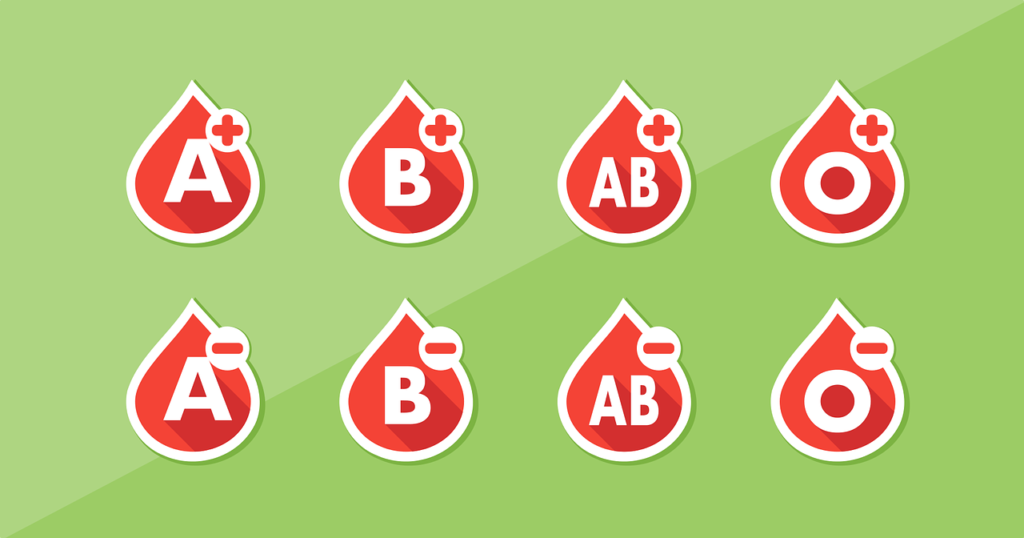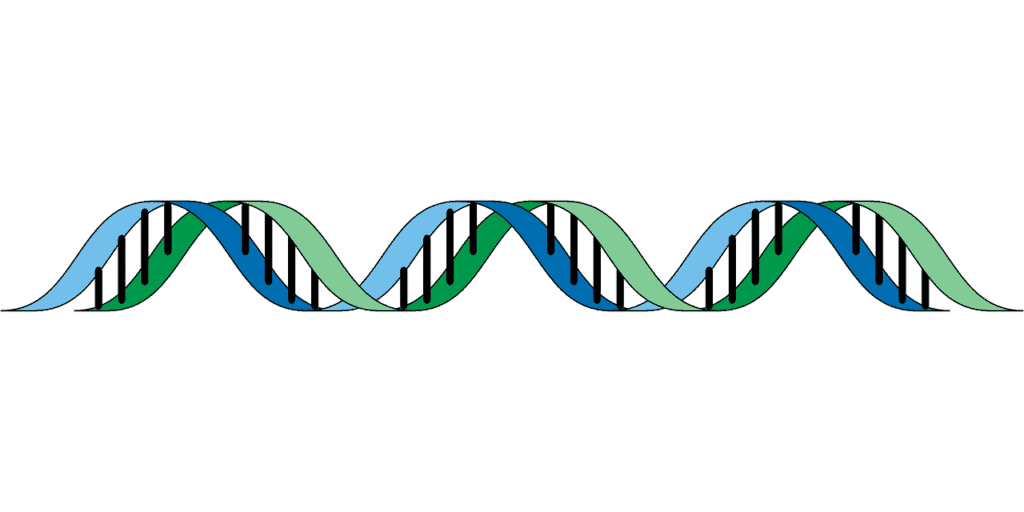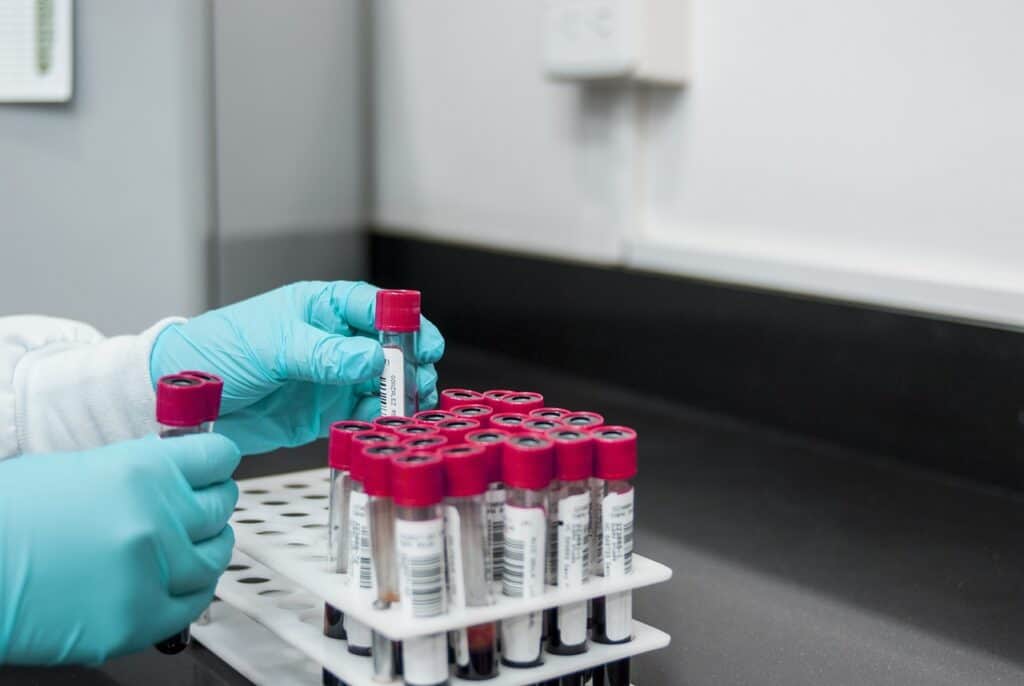It is commonly believed that siblings must have the same blood type since they share the same parents. However, this is not always the case. In fact, it is possible for siblings to have different blood types, and this can be due to a variety of reasons.
Understanding Blood Types
Blood types are determined by the presence or absence of certain antigens on the surface of red blood cells. There are four main blood types: A, B, AB, and O. Each blood type is further classified as either Rh-positive or Rh-negative, depending on the presence or absence of the Rh factor. Blood type compatibility is important in blood transfusions and organ transplants.
Genetics of Blood Types
Blood type inheritance is determined by the genes inherited from both parents. Each parent contributes one gene for each blood type antigen. The combination of these genes determines the child’s blood type. However, there are many different combinations possible, which can lead to siblings with different blood types. The Rh factor is also inherited in a similar manner.
Key Takeaways
- Blood types are determined by the presence or absence of certain antigens on the surface of red blood cells.
- Blood type inheritance is determined by the genes inherited from both parents, which can lead to siblings with different blood types.
- Blood type compatibility is important in blood transfusions and organ transplants.
Understanding Blood Types

Blood types are determined by the presence or absence of certain antigens on the surface of red blood cells. The four main blood types are A, B, AB, and O. Blood type is inherited from parents and is determined by genetic markers.
Type A blood has A antigens on the surface of red blood cells, while type B blood has B antigens. Type AB blood has both A and B antigens, and type O blood has neither. In addition to antigens, blood type is also determined by the presence or absence of certain proteins in the blood.
The ABO blood group system is the most important blood typing system for human blood transfusions. This system is based on the presence or absence of A and B antigens on red blood cells and antibodies in the plasma.
People with type A blood have A antigens on their red blood cells and antibodies against type B blood in their plasma. Those with type B blood have B antigens on their red blood cells and antibodies against type A blood in their plasma.
People with type AB blood have both A and B antigens on their red blood cells and no antibodies against either type A or B blood. Finally, people with type O blood have neither A nor B antigens on their red blood cells, but they have antibodies against both type A and B blood in their plasma.
Overall, siblings can have different blood types if they inherit different combinations of genes from their parents. For example, if one sibling inherits an A antigen from one parent and a B antigen from the other parent, they will have type AB blood. However, if another sibling inherits an A antigen from one parent and an O antigen from the other parent, they will have type A blood.
Genetics of Blood Types

Blood types are determined by the presence of specific proteins on the surface of red blood cells. These proteins are called antigens, and there are several different types that can be present or absent. The ABO blood group system is the most well-known and is based on the presence or absence of two antigens, A and B.
The genetics of blood types is complex and involves multiple genes. The ABO gene, located on chromosome 9, determines the ABO blood group system. This gene has three alleles: A, B, and O. Each person inherits two copies of this gene, one from each parent. The combination of these alleles determines a person’s blood type.
The A and B alleles are codominant, meaning that both are expressed equally when present. The O allele is recessive and is only expressed when both copies of the gene are O. Therefore, a person with two A alleles will have blood type A, a person with two B alleles will have blood type B, and a person with one A and one B allele will have blood type AB. A person with two O alleles will have blood type O.
In addition to the ABO gene, there are other genes that can affect blood type. For example, the Rh factor is another antigen that can be present or absent on red blood cells. The gene that determines Rh status is located on chromosome 1. A person who has the Rh antigen is Rh positive (Rh+), while a person who does not have the antigen is Rh negative (Rh-).
In conclusion, the genetics of blood types is a complex topic that involves multiple genes and alleles. The ABO gene is the most well-known and determines the ABO blood group system. A person’s blood type is determined by the combination of alleles they inherit from their parents.
Blood Type Inheritance

Blood type inheritance is a fascinating topic that has intrigued scientists for many years. Blood type is determined by the presence or absence of certain antigens on the surface of red blood cells. There are four main blood types: A, B, AB, and O. Each of these blood types is determined by the inheritance of specific antigens from parents.
Blood type is an inherited trait, which means that it is passed down from parents to their offspring. The blood type of a child is determined by the genetic makeup of their parents. Each parent contributes one of two possible alleles for each blood type gene, resulting in a combination of two alleles in the offspring.
The Punnett square is a useful tool for predicting the probability of offspring inheriting a particular blood type from their parents. The Punnett square is a chart that shows all the possible combinations of alleles that can result from a cross between two individuals.
For example, if one parent has blood type A and the other parent has blood type B, their offspring could inherit blood type A, blood type B, blood type AB, or blood type O. The probability of each blood type is determined by the combination of alleles contributed by each parent.
In summary, blood type inheritance is determined by the genetic makeup of parents and is an inherited trait passed down to offspring. The Punnett square is a useful tool for predicting the probability of offspring inheriting a particular blood type from their parents.
Siblings and Blood Types

Siblings can have different blood types due to genetic inheritance. Blood type is determined by the presence or absence of specific antigens on the surface of red blood cells. There are four main blood types: A, B, AB, and O. Each blood type is determined by the combination of two alleles, one from each parent.
When siblings have different blood types, it means that they have inherited different combinations of alleles from their parents. For example, if one parent has blood type A and the other parent has blood type B, their children could inherit either blood type A, B, AB, or O.
It is also possible for siblings to have the same blood type, as they could inherit the same combination of alleles from their parents. However, the probability of siblings having the same blood type decreases as the number of siblings increases.
In some cases, siblings may have blood types that are incompatible for blood transfusions. For example, if one sibling has blood type A and the other sibling has blood type B, they cannot receive blood transfusions from each other. This is because blood type A has A antigens on the surface of red blood cells, while blood type B has B antigens. If a person receives blood with antigens that their body does not recognize, their immune system will attack the foreign blood cells, leading to a potentially life-threatening reaction.
In conclusion, siblings can have different blood types due to genetic inheritance. It is important to know your blood type and the blood types of your family members in case of a medical emergency that requires a blood transfusion.
Twins and Blood Types

Twins are a fascinating subject of study when it comes to blood types. Identical twins, who come from the same fertilized egg, will always have the same blood type. Fraternal twins, on the other hand, come from two separate fertilized eggs and can have different blood types.
In the case of identical twins, the reason for having the same blood type is because they share the same genetic material. This means that their blood type is determined by the same set of genes, resulting in identical blood types.
For fraternal twins, the situation is a bit different. While they do not share the same genetic material, they do share the same environment in the womb. This can sometimes result in both twins having the same blood type, but it is not always the case.
It is important to note that even if twins have different blood types, they can still be genetically related. This is because blood type is determined by multiple genes, and it is possible for siblings to inherit different combinations of those genes from their parents.
In summary, while identical twins will always have the same blood type, fraternal twins can have different blood types due to inheriting different combinations of genes. It is also important to remember that blood type is not the only factor in determining genetic relatedness between siblings.
Rh Factor and Blood Types

The Rh factor is a protein that is found on the surface of red blood cells. If a person has this protein, they are considered Rh positive. If they do not have it, they are considered Rh negative.
There are four main blood types: A, B, AB, and O. Each of these blood types can be either Rh positive or Rh negative, resulting in a total of eight possible blood types.
It is important to note that a person’s Rh factor does not affect their blood type. For example, a person with type A blood can be either Rh positive or Rh negative.
However, the Rh factor can play a role in pregnancy. If a mother is Rh negative and the father is Rh positive, there is a chance that the fetus will inherit the Rh factor from the father. This can lead to complications in future pregnancies if the mother’s immune system develops antibodies against the Rh factor.
It is also worth noting that there is a rare blood type called Rh-null, which occurs when a person has no Rh proteins on their red blood cells. This blood type is extremely rare and can cause complications in blood transfusions if not properly matched.
Overall, while the Rh factor does not directly impact a person’s blood type, it can play a role in certain medical situations, particularly in pregnancy.
Blood Types and Donation

Blood type is an inherited trait that is determined by the presence or absence of certain antigens on the surface of red blood cells. There are four main blood types: A, B, AB, and O. Each blood type is further classified by the presence or absence of the Rh factor, which is another antigen.
When it comes to blood donation and transfusion, the compatibility of blood types is crucial. If a person receives blood that is not compatible with their own blood type, it can result in a potentially life-threatening reaction. Therefore, it is important to ensure that the blood type of the donor and recipient match.
People with type O blood are often referred to as “universal donors” because their blood can be transfused into people with any blood type. On the other hand, people with type AB blood are often referred to as “universal recipients” because they can receive blood from any blood type.
In addition to blood transfusions, blood type compatibility is also important in organ transplants. For example, a person with type A blood can receive a kidney from a donor with type A or type O blood, but not from a donor with type B or AB blood.
Overall, understanding blood types and their compatibility is crucial in ensuring safe and effective blood donation, transfusion, and organ transplant procedures.
Rarity and Prevalence of Blood Types

Blood types are determined by the presence or absence of antigens on the surface of red blood cells. There are four main blood types: A, B, AB, and O. The rarity and prevalence of these blood types vary across the world’s population.
The rarest blood type is AB, which only exists in about 3% of the global population. On the other hand, the most common blood type is O, which is present in approximately 44% of the population. Blood type A and B are less common, with a prevalence of around 42% and 10%, respectively.
In recent years, scientists have discovered a rare type of blood known as “golden blood.” This blood type is extremely rare, with fewer than 50 people known to have it worldwide. Golden blood is unique because it lacks all common antigens, making it valuable for medical research and transfusions.
Blood type is an important factor in medical treatment, as individuals with different blood types require specific types of blood during transfusions. For example, someone with blood type O can only receive O blood, while someone with blood type AB can receive any blood type.
Due to the high demand for blood transfusions, blood banks and donation centers rely heavily on donations from individuals with common blood types, such as O and A. However, individuals with rare blood types are also encouraged to donate, as their blood can be used for research and to help those with rare blood disorders.
Blood Types and Health

Blood types can play a role in a person’s health, as certain blood types may be more susceptible to certain diseases. For example, individuals with blood type A may have a higher risk of developing cardiovascular disease compared to those with blood type O.
Research has also suggested that blood type may play a role in the severity of COVID-19 symptoms, with individuals with blood type A potentially experiencing more severe symptoms compared to those with blood type O.
In addition, blood type can also impact a person’s ability to receive blood transfusions. Individuals with blood type AB are considered universal recipients, as they can receive blood from any blood type, while those with blood type O are considered universal donors, as their blood can be given to individuals with any blood type.
Overall, while blood type may not have a significant impact on a person’s health, it is important to be aware of how it can potentially impact certain aspects of health and medical treatment.
Blood Types and Pregnancy

During pregnancy, it is essential to determine the blood types of both parents. This is because the baby’s blood type is determined by the combination of the parents’ blood types. If the mother and father have different blood types, it is possible for the baby to inherit a different blood type than either of their parents.
The most common blood types are A, B, AB, and O. Each blood type is determined by the presence or absence of specific proteins on the surface of the red blood cells. For example, people with blood type A have A antigens on their red blood cells, while people with blood type B have B antigens.
If the mother has a different blood type than the baby, it can lead to complications during pregnancy. This is because the mother’s immune system can see the baby’s blood cells as foreign and attack them, causing hemolytic disease of the newborn (HDN). This can lead to anemia, jaundice, and other serious health problems for the baby.
To prevent HDN, doctors will test the mother’s blood type and Rh factor (a protein on the surface of red blood cells) early in pregnancy. If the mother is Rh-negative and the father is Rh-positive, the baby may be at risk for Rh disease. To prevent this, the mother may receive Rh immune globulin (Rhogam) during pregnancy to prevent her immune system from attacking the baby’s blood cells.
In conclusion, understanding blood types and their potential impact on pregnancy is crucial for the health of both the mother and the baby. Regular prenatal care and testing can help identify and prevent potential complications.
Related: Do Identical Twins Have the Same Blood Type
Frequently Asked Questions
Can siblings have different blood types if they have the same parents?
Yes, siblings can have different blood types even if they have the same parents. This is because each parent contributes one of their two blood type genes to their child, and there are multiple variations of these genes that can result in different blood types.
Do siblings always have the same Rh factor?
No, siblings do not always have the same Rh factor. Just like with blood type genes, each parent contributes one of their two Rh factor genes to their child.
If both parents are Rh positive, their child can be either Rh positive or Rh negative. If one parent is Rh positive and the other is Rh negative, their child can be either Rh positive or Rh negative as well.
What is the likelihood of siblings having different blood types?
The likelihood of siblings having different blood types depends on the blood types of their parents and the specific combination of genes they pass down to their children. However, it is not uncommon for siblings to have different blood types.
Is it possible for half siblings to have different blood types?
Yes, it is possible for half siblings to have different blood types. This is because half siblings share only one biological parent, and each parent contributes different genes that can result in different blood types.
Do twins always have the same blood type?
Not necessarily. While identical twins are always the same sex and have the same genes, they may not always have the same blood type. This is because blood type is determined by multiple genes, and the combination of genes each twin receives can result in different blood types.
Which parent determines the blood type of siblings?
Both parents contribute genes that determine the blood type of their children. The specific combination of genes each parent passes down to their child determines their blood type.

Iesha is a loving mother of 2 beautiful children. She’s an active parent who enjoys indoor and outdoor adventures with her family. Her mission is to share practical and realistic parenting advice to help the parenting community becoming stronger.
